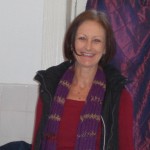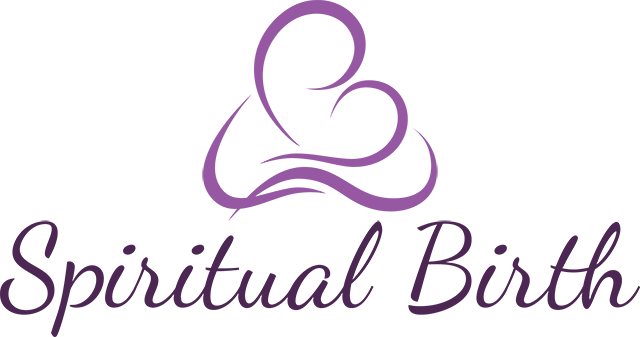
It has always struck me when I spend time with medical students, medical housemen(and women) and obstetric registrars as well as midwives in training in hospitals that there is a world of difference between what they are learning and what I have learnt over the years from my clients. Medical students, particularly in third world countries, are taught much more about pathological childbirth than natural physiological childbirth. They are taught to intervene, and rightly so. When the chips are down and women and babies are ill or dying, an obstetrician needs to have the skills and tools at her disposal to act courageously and skillfully.
The trouble is that when women are healthy and labouring normally, obstetricians are unsure of leaving well alone and we as midwives know that any interference in a physiological natural process can have iatrogenic consequences.
Sadly, few obstetricians attend homebirths, waterbirths or what I call natural births. Neither they nor hospital trained midwives learn to sit for 8-24 hours with a woman, holding her hand, massaging her back or just being ‘with her’ quietly. They do not learn patience. And a woman in labour and giving birth needs someone who is patient, calm and confident at her side. Women are left to labour alone, strapped onto beds and monitors or even pacing at home. While midwives and obstetricians can take a break from the intensity of the labour and escape from the room, a woman in labour remains just that – in labour and often strapped to the bed! She cannot escape.
We, as caregivers, need to look inwards and ask the questions: How were we born? How were our parents feeling at the time of birth? Was the birth traumatic? How were we treated when we arrived? Were we treated with respect and reverence, given to our parents for skin to skin, or were we separated? Is our anxiety making us ‘do unto others what was done unto us’? Or are we able to reflect on our suffering and reach compassion, imparting this to women in labour?
During the last few years I have taken several students who have shadowed my practice for varying periods of time. Some of the students have been medical students studying to become doctors and some of the students have been midwifery students. Students have come from America, Australia, New Zealand, Austria and South Africa. Students shadow my work in the practice, assist where they can and have the privilege of attending births with the client’s permission. This has been an amazing learning curve for me, and I have had to learn patience and clarity of thought and speech, as I am a very silent practitioner! Alison O’Donnell came from the United States of America for 6 weeks after her third year of Health Studies. She was interested in Obstetrics and had never seen a birth before. I think the shadow-time was quite an eye-opener for her. What follows is a short summary of her experiences.

“I was excited to get your e-mail! I hope you are doing well. I am currently in medical school (lots of studying – I have a big test coming up!) and I plan on pursuing internal medicine. I actually thought of you today when I attended a talk on musculoskeletal problems in pregnant women. Shadowing you really helped me follow what was going on (the position of the fetus, etc.).
Summary:
June 17, 2009 – Two clients in the morning, went to pre-natal class at night.
June 18 – Attended the medical school class, went with the medical students to see a cesarean section (this was my first time observing a C-section), attended meetings with several clients.
June 23 – Attended the medical school class and two post-natal visits.
June 24 – Attended two pre-natal visits in the clinic, and two post-natal home visits. I was awed when I palpated the fetus’ head, back, and limbs in one of the pre-natal visits, and I learned how to bathe a baby at the home of a client.
June 25 – Attended a birth with the medical students in the labor ward. I was surprised at the lack of privacy (only curtains between beds) and the number of medical staff and trainees. This birth was relatively traumatic in that the fetal heart rate had slowed and the baby, when born, had to be suctioned and induced to breathe. I also attended a post-natal visit of a woman who was having difficulties with breast-feeding and a pre-natal visit in the home of a woman who was preparing to have a home birth.
June 30 – Attended a water birth in the Active Birth Unit. I had a wonderful experience attending this beautiful birth, which was much different from the birth in the labor ward. I was surprised that two births in the same building could feel so different.
July 2 – Attended pre-natal visit.
July 8/9 – Attended a home birth. It was a very long labor and a very big baby.
July 13 – Two pre-natal visits.
July 14 – Hospital birth in the private hospital. I was surprised at how much the private rooms with water baths resembled the rooms in the Active Birth Unit.
Overall, from my experience I gained a much greater appreciation of the birth process from the point-of-views of midwives, doctors, and mothers and fathers. While I have chosen to pursue medicine, most likely specializing in internal medicine and maybe specializing further in nephrology, rheumatology, endocrinology, etc. (in other words, a specialty unrelated to obstetrics), I feel that my experience in Cape Town shadowing Marianne will help me become a better physician. In fact, my experience helped me realize that I am less interested in invasive medicine and much more interested in non-invasive care, particularly the prevention, diagnosis, and treatment of diseases.”
Labour and giving birth elicits our deepest feelings of anxiety and fear when we are not aware and conscious of our motivations. I have learnt that my fears are not always founded on a woman’s particular reality – they are my own personal fears. I have learnt to be calm in the face of ‘roaring tigresses’ and strong when with ‘despondent willows’. I have learnt to contain my own projections and allow a women to fulfill her destiny. I am human too and sometimes wish to intervene to quell my anxiety, to still the roaring, to bully the weeping – but when I hold back and patiently wait, I am amazed and astounded at the power of life, at the support we are all able to give in times of need and I am grateful.
Thank you Alison for sharing and caring, and I hope your future work brings all the fulfillment that caring for others can give and more.

This came at the right time for me as I am about to shadow Marianne as a student midwife and I have attended several labour ward births which are at times awesome and at other times disrespectful to the labouring mum. I am so looking forward to watching and working and seeing the patience and skill of a respected independent midwife.